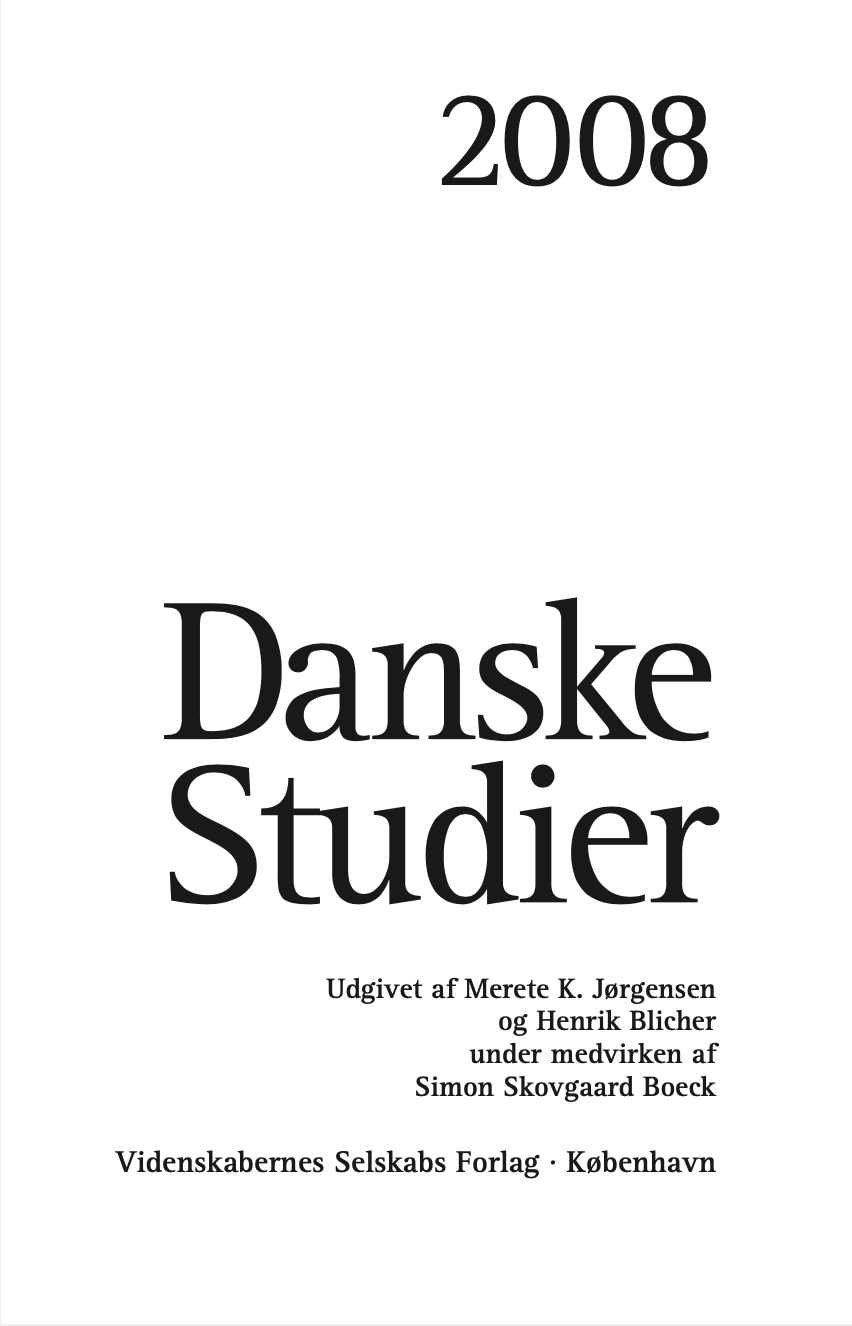Fortalens retorik – fra Arrebo til Oehlenschläger
Resumé
This article investigates the functions of the poet’s preface and its development in Danish literary history from the Baroque to the Romantic period. Using Gérard Genette’s synchronistic study of paratext as the basis, the article uncovers the formal, rhetorical and thematic features of the genre. The formal features help segregate the preface from the main text and thus forge a factual rather than a fictional pact with the reader. This factual pact is supported by the rhetorical and thematic features, as the poet’s preface speaks directly to the reader and includes references to the extratextual reality, for example by means of autobiographical information. Through a study of the poet’s preface in the Baroque period represented by Anders Arrebo and Thomas Kingo, the Classicist period represented by Ludvig Holberg and Christian Falster, the Sentimentalist period represented by Johannes Ewald and Jens Baggesen, and the Romantic period represented by Adam Oehlenschläger and Schack Staffeldt, the article argues that the primary function of the poet’s preface has been to develop the concept of the artist. Thus, as a genre, the poet’s preface is considered more of an art-critical and poetological introduction with varying persona structures than a guide to the reader.
Downloads
Publiceret
Citation/Eksport
Nummer
Sektion
Licens

Dette værk er under følgende licens Creative Commons Navngivelse – Ikke-kommerciel – Del på samme vilkår (ShareAlike) (by-nc-sa).
Artikler offentliggjort fra 1/1 2021 er omfattet af CC BY-NC-ND-Licens.
Artikler publiceret i Danske Studier før 1/1 2021 er underlagt dansk ophavsret. Det betyder at man må citere, downloade og linke til dem via tidsskrift.dk. Genudgivelse af artiklerne kræver en aftale med redaktionen som også ejer ophavsretten.





